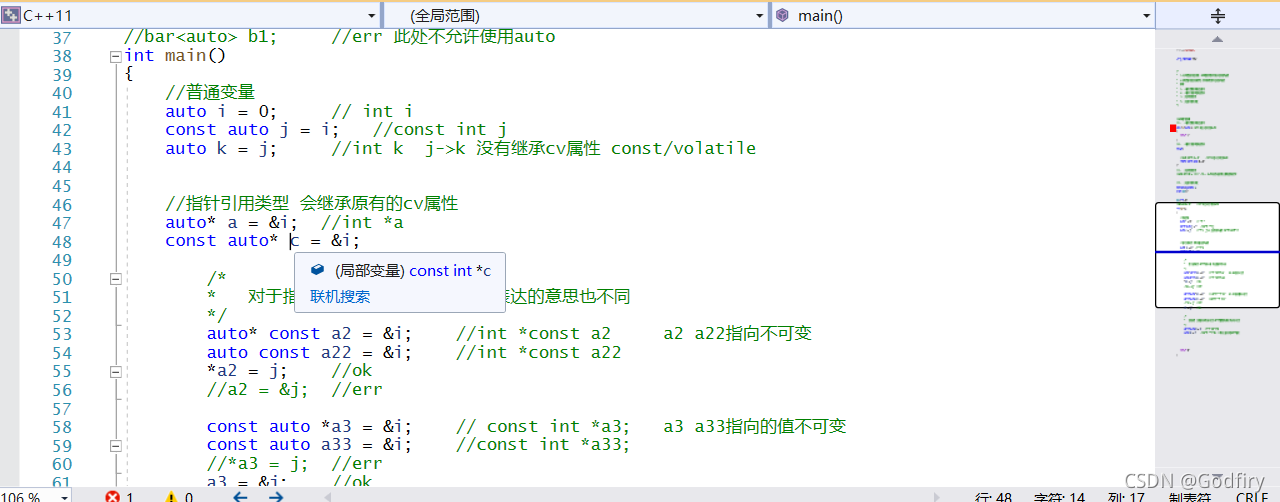auto关键字在c++11之前,表示存储类型指示符,表示具有自动存储期的局部变量。
比如
auto int a = 0;
static int j = 0;
以上两者是相对的,一个在出变量作用域就会释放内存,static变量会存放在静态数据区,对于未初始化的会自动初始化未为0,在程序结束后才会释放内存。
在c++11标准中,auto变成了一个类型指示符,用来提示编译器对此类型的变量做自动推导,但是有一些注意的地方需要说明,
- 当变量不为指针或引用时,auto进行推导会抛弃const和volatile属性
- 变量是指针和引用时,auto保留const和volatile属性
例子
//普通变量
auto i = 0; // int i
const auto j = i; //const int j
auto k = j; //int k j->k 没有继承cv属性 const/volatile
//指针引用类型 会继承原有的cv属性
auto* a = &i; //int *a
const auto* c = &i;
在VS上可以将鼠标悬浮在变量名上,查看变量类型。

有四种情形没有办法使用auto,分别是
- auto无法作为函数形参
- 没有办法修饰数组
- 不能用于非静态成员变量
- 无法做模板类型推导
举例
//auto的4处限制
//1. 不能作为函数参数进行推导
void fun(auto a) //err 此处不允许使用auto
{
return a;
}
//2. 不能用于非静态的成员变量
struct{
//auto const a = 0; //err 此处不允许使用auto
static const auto b = 0;
};
//3. 无法初始化数组
//auto arr[10] = { 0 }; //C++ “auto”类型不能出现在顶级数组类型中
//4. 无法推导模板参数
template<typename T>
class bar{};
bar<int> b;
//bar<auto> b1; //err 此处不允许使用auto
使用auto的好处
使用迭代器不在需要大段的编写类型定义,以下是关于输出map在c++98 11 17 的代码。
std::map<int, std::string> m;
m.insert({ 1, "world" });
//c++17引入的特性
for (const auto& [number, name] : m)
{
std::cout << number << "|" << name << std::endl;
}
//c++98
std::map<int, std::string>::iterator it = m.begin();
for (; it != m.end(); it++)
{
std::cout << it->first << "|" << it->second << std::endl;
}
//c++11
auto it = m.begin();
for (; it != m.end(); it++)
{
std::cout << it->first << "|" << it->second << std::endl;
}